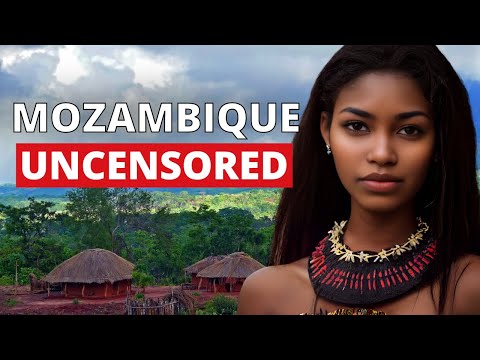
Mozambique, a country along the southeastern coast of Africa, is a land rich in cultural diversity, natural beauty, and historical complexity. From the bustling streets of Maputo to the quiet fishing villages dotted along the Indian Ocean coast, Mozambique offers a unique slice of life that is both captivating and challenging. Here’s an insight into the traditions, people, dangers, threatened animals, and things not to do when visiting or understanding Mozambique.
#### Traditions
Mozambican culture is a vibrant tapestry woven from diverse ethnic groups including the Makhuwa, Sena, Shona, and many others. One of the most widespread traditional practices in Mozambique is the *Timbila* music of the Chopi people in the south. Recognized by UNESCO as a Masterpiece of Oral and Intangible Heritage of Humanity, *Timbila* performances involve intricately carved xylophones played in large ensembles during community ceremonies.
Another significant tradition is the *dhow* sailing culture along Mozambique’s coast. These traditional boats have been used for centuries for fishing and transportation. Today they symbolize resilience and cultural continuity.
#### People
Mozambicans are known for their warmth and hospitality. The population comprises roughly 30 million people with over 40 different ethnic languages spoken throughout the country. Portuguese remains the official language due to colonial history but is primarily used as a second language by much of the population.
The majority of people are involved in agriculture with subsistence farming prevailing in rural areas. Urban areas like Maputo feature a mix of formal and informal economies where street vendors sell colorful batiks alongside modern office buildings.
#### Dangers
Safety can be an issue in certain parts of Mozambique due to political instability and occasional civil unrest. Travel advisories should be checked regularly if planning a visit.
Healthcare facilities outside major cities are limited; thus visitors should take preventive health measures especially against malaria which remains prevalent. Moreover, natural hazards like seasonal cyclones can pose significant risks.
#### Threatened Animals
Mozambique’s wildlife has suffered severe losses due to poaching and habitat destruction – particularly during years of civil conflict from 1977-1992. Iconic species like elephants have been heavily impacted; however conservation efforts are ongoing within national parks such as Niassa Reserve and Gorongosa Park.
Other threatened species include:
– The Dugong: These sea mammals are critically endangered mainly due to illegal fishing practices.
– The African Wild Dog: This rare canine faces threats from habitat encroachment.
Conservation programs supported by both local communities and international collaborations are critical for these species’ survival.
#### Things Not To Do
1. **Do Not Disregard Local Customs**: Always ask permission before taking photographs of people or entering sacred sites.
2. **Avoid Displaying Valuables Publicly**: Petty theft can occur particularly in crowded urban areas.
3. **Do Not Ignore Conservation Rules**: Whether it involves interaction with wildlife or adhering to park guidelines.
4. **Avoid Unprotected Water Bodies**: Schistosomiasis (Bilharzia) can be contracted through freshwater sources; stick to treated pools or well-maintained beaches.
5. **Do Not Just Stick to Tourist Areas**: While it’s important to be cautious about where you go especially at night exploring with a knowledgeable local guide can provide deeper insight into this diverse country.
In conclusion, life in Mozambique encompasses its fair share of beauty and challenges reflective both through everyday living or when seen through its vast cultural heritage sites like Ilha de Moçambique (Mozambique Island). Understanding these dynamics provides not just safer travel but also enriches one’s appreciation for this remarkable country nestled along Africa’s southeast coast.
